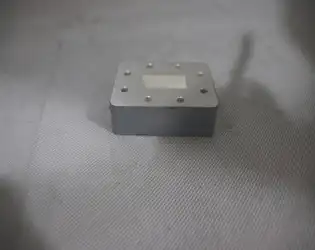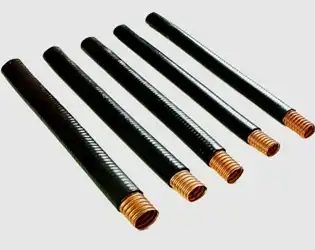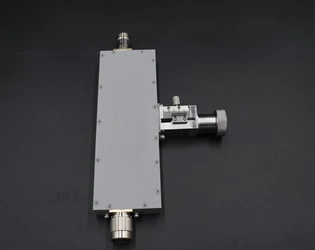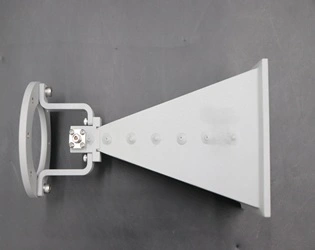BLOG

What are the advantages and disadvantages of a Standard Horn Antenna?
February 26, 2025
Standard Horn Antennas represent one of the most fundamental components in microwave engineering, serving as critical elements in signal transmission and reception across various applications. These specialized antennas, characterized by their distinctive flared waveguide structures, offer a unique combination of performance characteristics that make them simultaneously invaluable and, in certain contexts, limiting. Advanced Microwave Technologies Co., Ltd, with over two decades of experience manufacturing high-quality microwave products, has developed extensive expertise in the design and production of Standard Horn Antennas that balance these inherent trade-offs to deliver optimal performance across diverse use cases.
What are the main differences between a regular waveguide short and a Waveguide Offset Short?
February 26, 2025
When exploring the world of microwave engineering and radio frequency applications, understanding the nuances between various waveguide components becomes crucial for optimal system performance. One common question that arises among engineers and technical professionals is regarding the difference between a regular waveguide short and a Waveguide Offset Short. These components, while similar in their fundamental purpose of reflecting microwave signals, have distinct characteristics that make them suitable for different applications. In this comprehensive guide, we will explore the key differences between these two types of waveguide shorts, their operational principles, and how they impact the performance of microwave systems.
What Materials Are Commonly Used in the Manufacturing of Waveguide Tubes?
February 26, 2025
The selection of appropriate materials in waveguide tube manufacturing is critical for ensuring optimal microwave signal transmission across various applications. Waveguide tubes, fundamental components in microwave and millimeter-wave systems, require specific materials to maintain signal integrity and meet performance requirements. In today's advanced communications landscape, materials like aluminum, copper, brass, and specialized alloys are predominantly employed due to their excellent electrical conductivity, mechanical properties, and customizability. Elliptical Waveguide designs, in particular, benefit from carefully selected materials that can maintain the precise geometry needed for effective signal propagation while providing the structural integrity required for both indoor and outdoor installations.
February 25, 2025
In the realm of microwave transmission systems, the choice of waveguide geometry plays a crucial role in determining transmission efficiency and performance. Elliptical Waveguides have emerged as a superior alternative to traditional rectangular waveguides, particularly in long-distance transmission applications. These specialized components offer remarkable advantages in signal integrity, power handling capability, and overall system efficiency. Advanced Microwave Technologies Co., Ltd, with over two decades of experience in microwave products, has been at the forefront of developing and manufacturing high-performance Elliptical Waveguides that meet the demanding requirements of modern communication systems.
How to improve isolation between ports of a waveguide power divider?
February 25, 2025
Power isolation between ports is a critical performance parameter in waveguide power dividers that directly impacts signal integrity and system efficiency. In high-frequency microwave applications, achieving optimal isolation between output ports prevents unwanted signal coupling and ensures accurate power distribution. This article explores various techniques and design considerations for enhancing port isolation in waveguide power dividers, drawing from Advanced Microwave Technologies' extensive experience in manufacturing high-performance microwave components.
How to accurately measure the insertion loss of a waveguide harmonic filter?
February 25, 2025
Accurate measurement of insertion loss in waveguide harmonic filters is crucial for ensuring optimal performance in microwave systems. These measurements directly impact the filter's ability to suppress unwanted harmonics while maintaining signal integrity in critical applications. The precision of these measurements becomes particularly important when dealing with high-frequency applications up to 110 GHz, where even minor variations can significantly affect system performance. This comprehensive guide explores the essential techniques and considerations for obtaining precise insertion loss measurements in waveguide harmonic filters.
What are the main working principles of Coaxial Variable Attenuators?
February 24, 2025
Coaxial Variable Attenuators are sophisticated microwave components designed to precisely control signal amplitude in RF and microwave systems. These devices operate on the principle of controlled signal reduction through various mechanisms, including resistive cards, rotary vanes, or PIN diodes. The fundamental working principle involves creating a controlled impedance mismatch or introducing lossy materials in the signal path to achieve desired attenuation levels. Understanding these principles is crucial for engineers and technicians working in satellite communications, defense systems, and aerospace applications where precise signal control is paramount.
February 24, 2025
The customization capabilities of Wideband Double-ridged Horn Antennas represent a significant advancement in microwave technology, offering unprecedented flexibility for diverse applications. These sophisticated antenna systems can be tailored to meet specific requirements across various sectors, from electromagnetic compatibility testing to advanced telecommunications. Advanced Microwave Technologies Co., Ltd (ADM), with its two decades of expertise, has pioneered innovative approaches to antenna customization, enabling precise modifications in frequency range, gain characteristics, and physical dimensions to align with unique application demands. This adaptability ensures optimal performance across different scenarios while maintaining the fundamental advantages of wide bandwidth and high directivity that characterize double-ridged horn designs.




